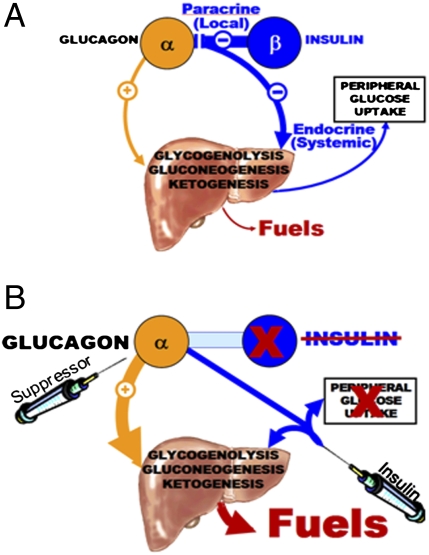Fig. 2.
(A) Representation of the Sherringtonian model of coordinated reciprocal paracrine hormone secretion in the regulation of homeostasis of fuel production and utilization. In this model, the β-cell controls basal α-cell secretion of glucagon via tonic paracrine inhibition. When a carbohydrate-containing meal stimulates insulin secretion, the paracrine insulin promptly suppresses the α-cells to reduce glucagon secretion and lower hepatic fuel production. Meanwhile, the endocrine insulin that enters the systemic circulation reduces hepatic fuel production by opposing glucagon action and also enhancing glucose uptake by skeletal muscle and adipocytes. (B) A representation of the paracrinopathy of T1DM and a novel strategy for its management. When the β-cells are absent and a paracrine source of insulin-mediated α-cell suppression is absent, unregulated hyperglucagonemia contributes to glycemic volatility. Peripheral injections of insulin cannot approach the high paracrine levels provided by local insulin secretion by juxtaposed β-cells without overinsulinizing the downstream targets of insulin, thus further destabilizing glycemia. By suppressing glucagon secretion with leptin, one can restore the tonic inhibition on α-cells while lowering peripheral insulin levels to a physiologic range and thus reduce risk of hypoglycemia.

